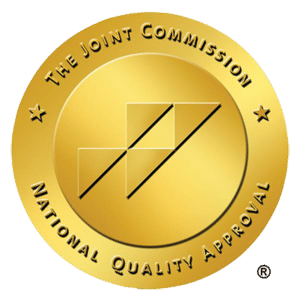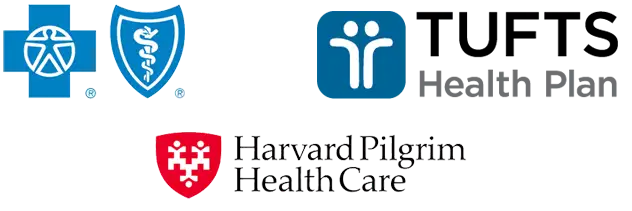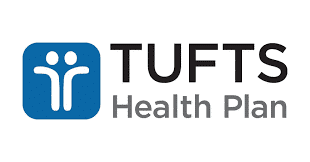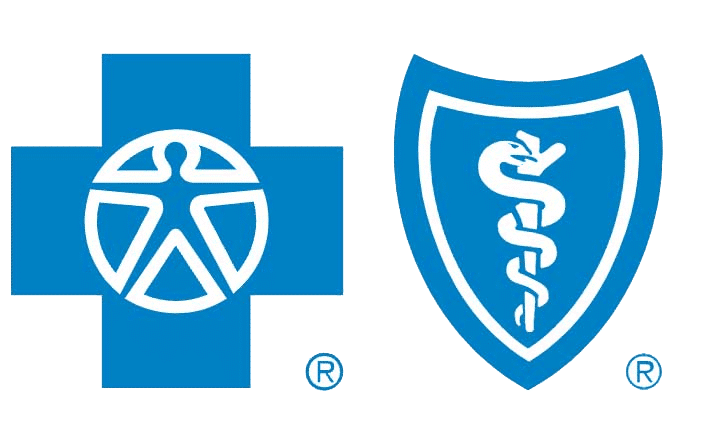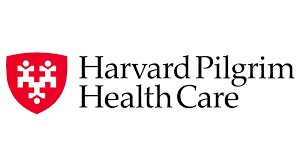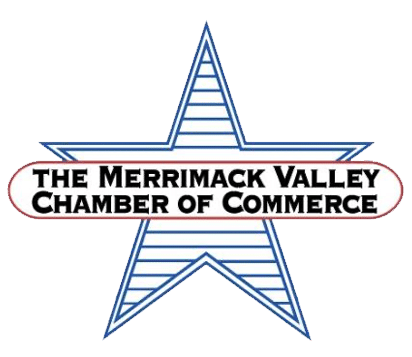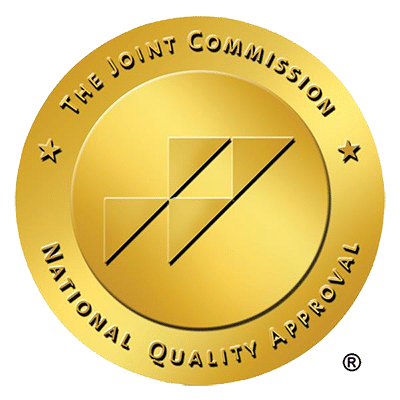Confronting heroin addiction requires a solid understanding of effective treatment options for heroin. This article delves into various methodologies, from medication-assisted therapy to behavioral counseling, providing a roadmap for recovery from this challenging dependency.
Key Takeaways
- Heroin addiction treatment is complex due to the drug’s alteration of brain structure, which requires an individualized approach and a deep understanding of its effects on dopamine and opioid receptor activity.
- Medication-assisted treatment (MAT) with FDA-approved medications like Methadone and Buprenorphine, combined with behavioral therapies such as Cognitive Behavioral Therapy (CBT), is essential for managing withdrawal symptoms and reducing relapse rates in heroin addiction recovery.
- A comprehensive care approach, including professional intervention services, family involvement, community resources, and management of co-occurring disorders, is crucial in supporting long-term recovery and preventing relapse in individuals recovering from heroin addiction.
Understanding Heroin and Its Grip on the Brain
Heroin, an illegal opioid derived from morphine, is a highly addictive drug. Its powerful grip lies in its ability to manipulate the brain’s dopamine levels, fostering an intense cycle of craving and opioid dependence. It’s a cunning enemy, starting as a seemingly harmless pleasure, but rapidly escalating to a relentless physical dependence. Once consumed, heroin activates mu-opioid receptors in the brain. These receptors, responsible for regulating pain and emotions, respond by releasing a significant amount of dopamine, reinforcing drug use behavior.
In essence, heroin doesn’t just create a physical dependence; it changes the very structure of your brain, making treatment for heroin a complex and individualized process. However, grasping this process and understanding how heroin affects the brain forms the cornerstone of seeking help for heroin abuse.
Navigating Heroin Withdrawal Symptoms
When an individual decides to stop using heroin, it is often the fear of acute withdrawal symptoms that deters them. Heroin withdrawal can lead to a wide range of symptoms, including:
- depressed mood
- nausea
- vomiting
- muscle aches
- runny nose
- diarrhea
- excessive yawning
- fever
- insomnia
While heroin withdrawal is not typically fatal, the severe discomfort experienced during this process can cause individuals to relapse back into using the drug, potentially leading to a heroin overdose.
As a result, it is unwise to navigate the minefield of heroin withdrawal solo. During the withdrawal phase, continuous care provided by a team of addiction specialists, including doctors and nurses experienced in managing symptoms of heroin detoxification, is essential. A medically supervised detox ensures safe withdrawal, with trained professionals overseeing the process and administering appropriate medications to successfully wean off heroin.
The Timeline of Heroin Withdrawal
Being aware of the timeline of heroin withdrawal is essential for those gearing up to commence their recovery journey. Heroin withdrawal symptoms usually manifest between 6 to 12 hours after the last dose administered. This initial phase is often followed by the most severe phase of withdrawal, which typically occurs within the first 1 to 3 days after cessation of use.
However, there is a silver lining. Symptoms generally begin to subside and are significantly diminished within 5 to 7 days from their onset. It’s important to note that the severity and overall duration of heroin withdrawal can vary based on factors such as the duration of addiction and the typical dosage that was being used before cessation.
Insight into this timeline can pour in reassurance and offer a broader viewpoint during the withdrawal process.
Medication-Assisted Treatment (MAT) Strategies
Medication-assisted treatment (MAT) is fundamental to the process of heroin addiction recovery. It combines FDA-approved medications with behavioral therapies to treat heroin addiction. Two such medications used in MAT are Methadone and Buprenorphine. By acting as a partial opioid agonist or antagonist, these medications help alleviate cravings and withdrawal symptoms that are commonly experienced during heroin addiction recovery.
Outpatient treatment programs, such as those offered by Topsail, can include MAT, offering a viable option for heroin addiction treatment.
Methadone Maintenance Therapy
One of the most effective and time-honored MAT strategies is Methadone Maintenance Therapy (MMT). Methadone, utilized since 1947, has proven effective in reducing opioid consumption and is acknowledged by the World Health Organization as a critical option for treating heroin dependence. The initiation of methadone treatment involves a carefully managed starting dose, with planned increases to gradually reach the effective maintenance dose.
Clinical evidence supports that:
- Methadone doses above 60mg per day are more effective for preventing heroin use and relapse.
- Patients maintaining methadone treatment are more likely to remain in therapy.
- Patients maintaining methadone treatment have fewer opioid-positive drug tests.
- Patients maintaining methadone treatment can engage in productive activities, enhancing their life quality.
Buprenorphine-Based Treatments
Buprenorphine-based treatments, another effective MAT strategy, have been available since 2002. Buprenorphine has shown to lower the relapse rates when continued over a longer period. To be deemed effective, buprenorphine needs to be administered at the correct dosage, typically 16 mg per day or more.
Although these medications aren’t a cure-all, they play a pivotal part in the path towards recovery from heroin addiction. They allow individuals to manage withdrawal symptoms, reduce cravings, and ultimately, reclaim control over their lives.
Want to Learn More about Heroin Addiction?
Our addiction recovery team is here 24/7 to answer your questions or to get you help.
Opioid Withdrawal Symptoms
Withdrawal symptoms are a key facet of opioid addiction that can be particularly distressing. Early symptoms include:
- agitation
- anxiety
- muscle aches
- insomnia
- runny nose
- sweating
- yawning
- diarrhea
- dilated pupils
- goosebumps
- nausea
- vomiting
These symptoms usually start within 12 to 30 hours after the last use, depending on the opioid, with symptoms increasing in severity over a period of 72 hours. The intensity of these symptoms varies from person to person based on their level of physical dependence, and complications can include aspiration, dehydration, and electrolyte disturbances.
Comprehension of these symptoms is vital as it assists individuals and healthcare professionals in better managing the detoxification process.
Risk Factors for Opioid Addiction
Knowing the risk factors for opioid addiction is vital for successful prevention strategies. Certain genetic variants, especially those affecting opioid and dopamine receptors, have been linked with an increased risk of opioid addiction. These genetic polymorphisms can impact how individuals respond to opioids, influencing variations in pain relief and addiction propensity.
Behavioral traits and untreated psychiatric disorders also contribute to one’s risk of developing opioid addiction. For example, traits such as reward deficiency, sensation-seeking, and impulsivity have been identified as intrinsic contributors to an individual’s risk. Untreated psychiatric disorders can also contribute to the risk of opioid misuse or addiction.
Social and environmental factors also play a role in the risk of opioid addiction. For instance, exposure to a social or family environment that encourages misusing substances can heighten the risk of developing opioid addiction. Additionally, the initiation of substance use during adolescence significantly increases the risk of developing severe addiction and other health morbidities.
Consequences of Opioid Addiction
Opioid addiction can have devastating consequences. It can lead to significant health problems, disability, and an increased risk of relapse, overdose, and death. Developing a tolerance to opioids can also lead to opioid-induced hyperalgesia, where patients experience increased sensitivity to pain, often resulting in severe pain.
Further, those using opioids for pain management face a heightened suicide risk, necessitating improved knowledge and monitoring of these patients. Middle-aged individuals with substance abuse and psychiatric comorbidities are more likely to die from opioid-related causes. The addiction also contributes to a range of health risks, including injuries and infectious diseases. Impaired judgment due to opioid use increases the risk of contracting infectious diseases like HIV due to risky behaviors like unprotected sex.
Overall, the consequences of opioid addiction are far-reaching and severe, affecting not only the individuals but also their families and communities.
Treatment Options for Opioid Addiction
When it comes to the most effective approach to treat opioid addiction, a combination of medication and behavioral therapies is often recommended. Medications like methadone, buprenorphine, and naltrexone can help to relieve cravings, alleviate withdrawal symptoms, and prevent relapse.
Behavioral therapies and long-term treatments such as self-help groups, outpatient counseling, and checking for co-occurring mental illnesses are also crucial in enhancing the psychological rehabilitation of individuals with opioid dependence. The role of mental health services administration in providing support and resources for these treatments cannot be overstated.
The blend of medication and behavioral treatment proves most effective in treating opioid use disorder, and an integrated approach is indispensable for long-term management and recovery.
Medication-Assisted Treatment
Medication-assisted treatment (MAT) is a crucial part of treating opioid use disorder. Three U.S. Methadone, buprenorphine, and naltrexone are commonly used FDA-approved medications to treat this disorder. They are recognized by the Food and Drug Administration for their effectiveness..
These medications, known as opioid drugs, act on the same brain structures and opioid receptors as addictive opioids. However, they do so in ways that provide protective or normalizing effects, ranging from alleviating cravings without producing euphoria to blocking the highs from opioid use. Knowledge of how these medications function is essential to both healthcare providers and patients in managing opioid addiction.
Behavioral Therapies
In addition to medications, behavioral therapies play a significant role in treating opioid addiction. Counseling offers a safe space to address the impact of addiction and fosters the development of healthier coping strategies through individual, group, and family counseling sessions.
Diverse therapeutic forms like Cognitive Behavioral Therapy (CBT), Motivational Interviewing (MI), and the Community Reinforcement Approach (CRA) play a significant role in treating opioid addiction. These therapies provide personal benefits such as:
- fostering positive outlooks
- healthy habit formation
- relapse prevention planning
- coping skills to manage stress and avoid reliance on opioid use.
Prevention Strategies
Preventing opioid addiction requires proactive strategies. One of the most straightforward strategies is to carefully follow doctor’s orders and take prescription medications, such as prescribed opioids, only as directed to prevent misuse and potential addiction.
Considering non-drug treatments for pain management is another useful approach. Options like:
- acupuncture
- biofeedback
- electrical stimulation
- massage therapy
- meditation
- physical therapy
- psychotherapy
- relaxation therapy
Seeking non-opioid medications or treatments to relieve pain can offer effective pain relief without the risk of addiction. Additionally, this approach can significantly reduce the risk of developing an addiction.
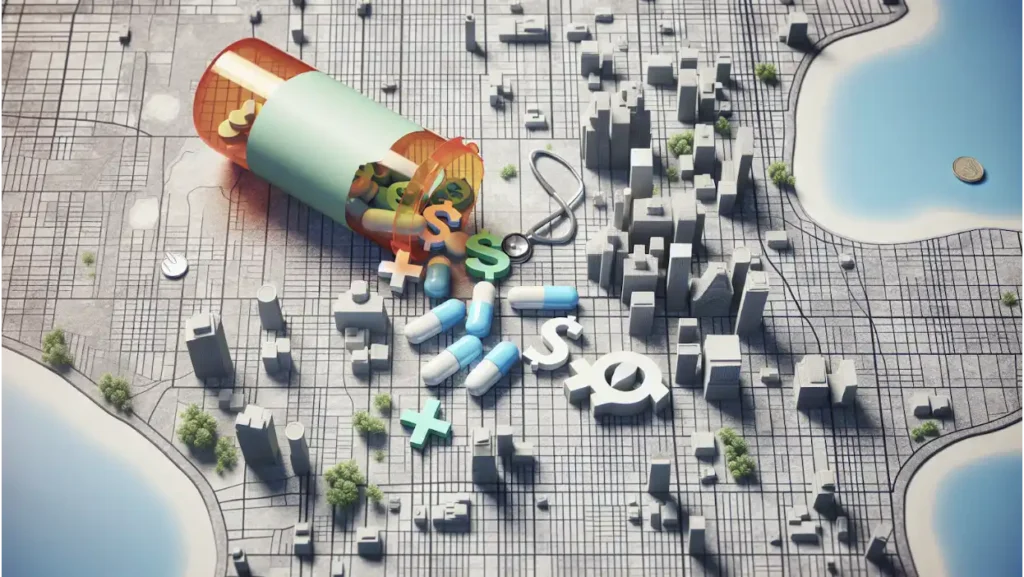
Behavioral Therapies as a Pillar of Heroin Addiction Treatment
Alongside MAT, behavioral therapies stand as a key component of heroin addiction treatment. One such therapy is Cognitive Behavioral Therapy (CBT). CBT for substance use disorders focuses on overcoming the psychoactive substance effects through motivational strategies, cognitive strategies, and skills development. It is effective in reducing substance abuse rates significantly more than treatments that do not include CBT, with effects that can be lasting, offering durable treatment outcomes for those overcoming drug abuse and dependence.
Other behavioral therapies, like Contingency Management (CM) therapy and the Community Reinforcement Approach (CRA), have shown to be effective when involving patient’s partners, families, and communities in treatment. These therapies aid in addressing the challenges and triggers that sustain harmful substance use, teaching individuals recovery skills. However, the effectiveness of combination treatments of CBT with pharmacotherapy requires further study to optimize treatment strategies.
Comprehensive Care at Topsail: A Path to Recovery from Heroin Abuse
Topsail, a leading addiction treatment facility, provides personalized outpatient rehabilitation services, catering specifically to substance abuse disorders, including heroin addiction. The facility’s licensed staff craft custom treatment plans considering each individual’s circumstances, and they are experienced in various forms of addiction, especially heroin addiction treatment.
Outpatient rehab at Topsail offers flexibility, enabling patients to live at home and balance work or family while attending treatment sessions, which include counseling, medication administration, support groups, and educational activities. Topsail’s outpatient programs comprise day programs which demand a notable time commitment, intensive outpatient programs that adapt as milestones are achieved, and continuing care to sustain recovery.
Furthermore, Topsail provides professional intervention services, affirming their commitment to supporting not just the patient but also their family.
Support Beyond Treatment: Family Involvement and Community Resources
Addiction affects not only the individual but also their family and community. Patients are often encouraged to seek treatment due to positive family involvement and intervention. Involving a single family member or a significant other in the treatment reinforces and motivates positive change, benefiting the entire family system. Studies have shown that clients with family support demonstrate higher treatment completion rates compared to those without such support.
Beyond family involvement, community resources play a pivotal role. SAMHSA’s National Helpline provides a confidential information service for individuals and family members dealing with mental and substance use disorders, offering referrals to treatment facilities and support groups. Peer support groups, like Alcoholics Anonymous and Narcotics Anonymous, provide a platform for individuals in recovery to assist those in earlier stages.
Managing Co-Occurring Disorders and Mental Health Services
The path to recovery from heroin addiction frequently involves tackling co-occurring disorders. These involve the simultaneous presence of substance use disorders and mental illnesses, which are frequently observed in individuals struggling with heroin addiction. Federal law mandates that opioid treatment programs offer multidisciplinary services such as:
- counseling
- medical assessments and treatments
- vocational assessments and treatments
- educational assessments and treatments
This integrated approach to recovery is crucial in addressing the complex needs of individuals with heroin addiction.
Medication-assisted treatments for substance use disorders achieve greater effectiveness when paired with counseling and comprehensive support services, symbolizing the integration of care for both the addiction and any co-occurring mental health issues. Recovery from heroin addiction can be complicated by protracted withdrawal that includes persistent symptoms like anxiety, depression, and cravings, underscoring the need for managing mental health alongside addiction treatment.
Real Stories of Overcoming Heroin Use Disorder
The road to recovery from heroin addiction can sometimes feel solitary, but it’s crucial to remember that you’re not in this alone. There are many inspiring stories of individuals who have successfully overcome heroin addiction. Take the case of a former heroin addict, who, following a seven-year struggle with addiction, credits the compassionate care received at River Oaks treatment facility for over two years of sobriety.
Additionally, celebrities like Steven Tyler of Aerosmith, Robert Downey Jr., and Russell Brand have been open about their struggles with heroin addiction and their ongoing sobriety, using their platforms to raise awareness about the realities of addiction and the potential for recovery. These stories serve as a beacon of hope, reminding us that recovery is indeed possible.
Preparing for Long-Term Success: Relapse Prevention and Aftercare
Recovery from heroin addiction isn’t a one-off event but rather a lifelong pledge. Preparing for long-term success involves implementing relapse prevention strategies and aftercare. Relapse Prevention is a cognitive behavioral therapy strategy that is critical in heroin addiction recovery aftercare. These strategies include therapy, skill development, and a phased approach that addresses emotional, mental, and physical relapse stages.
Continuing care involves participation in community support groups such as Alcoholics Anonymous or Narcotics Anonymous to help maintain sobriety after formal treatment has ended. Objective monitoring methods, such as urine drug screens and breathalyzers, are utilized in many relapse prevention programs to provide evidence of ongoing abstinence.
Heroin addiction is a complex issue, but with the right treatment approach, recovery is more than possible—it’s achievable. From understanding the biological mechanisms of heroin addiction to navigating withdrawal symptoms, implementing MAT strategies, incorporating behavioral therapies, managing co-occurring disorders, and preparing for long-term success with relapse prevention and aftercare, the path to recovery can be navigated successfully.
Frequently Asked Questions
What is heroin and why is it addictive?
Heroin is an illegal opioid derived from morphine. It’s highly addictive due to its impact on the brain’s dopamine levels, leading to intense craving and dependence.
What does heroin withdrawal look like?
Heroin withdrawal can include symptoms such as depressed mood, nausea, muscle aches, and insomnia, which typically start within 6 to 12 hours after the last dose and peak within the first 1 to 3 days. Take care.
What is the role of medication in heroin addiction treatment?
Medication plays a crucial role in heroin addiction treatment by alleviating cravings and withdrawal symptoms, reducing the risk of relapse. Methadone and Buprenorphine are commonly used in Medication-Assisted Treatment (MAT) for this purpose.
How does Topsail provide treatment for heroin addiction?
Topsail provides personalized outpatient rehabilitation services, including counseling, medication administration, support groups, and educational activities, as well as a variety of programs to support sustained recovery. This comprehensive approach addresses heroin addiction effectively.
What support is available beyond treatment?
Beyond treatment, individuals can access support through community groups like Alcoholics Anonymous or Narcotics Anonymous, as well as through relapse prevention strategies and monitoring methods to maintain sobriety and ongoing abstinence. These resources help individuals continue their recovery journey post-treatment.
Related Posts

Critical Signs of Meth Addiction: Symptoms & Support Options
Wondering what are the warning signs of meth addiction? Early detection can be lifesaving. From drastic behavioral swings to ‘meth mouth,’ these symptoms are alarming

Essential Guide on How to Help Someone with Meth Addiction
If you’re seeking to understand how to help someone with meth addiction, this article is your immediate support guide. Encountering meth addiction within someone you

Recognizing the Warning Signs of Marijuana Addiction
Knowing the signs of marijuana addiction is vital for recognizing a serious problem that often goes unnoticed. In this article, we address the real indicators

Decoding Opioid Addiction Statistics: A Harsh Reality Check
What do the numbers say about the opioid crisis? Diving into opioid addiction statistics offers a sobering reality check: a surge in usage and deaths

Effective Strategies on How to Prevent Opioid Addiction
The key to preventing opioid addiction starts with being informed. If you’re seeking concrete steps on how to prevent opioid addiction, this article is for

How to Help Someone with Cocaine Addiction Effectively
Wondering how to help someone with cocaine addiction? It can feel overwhelming, but your role is crucial. In this guide, you’ll find understandable and practical
